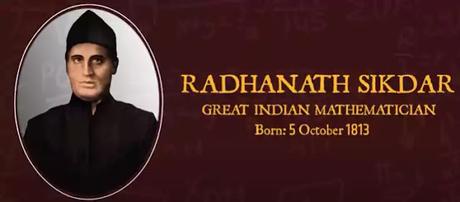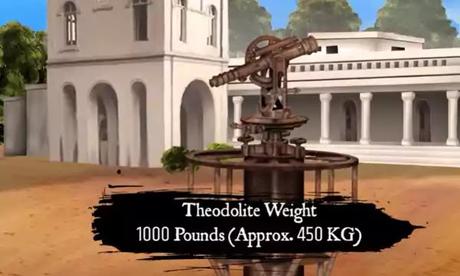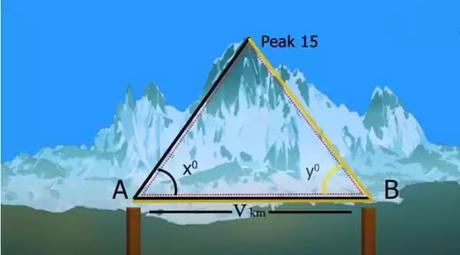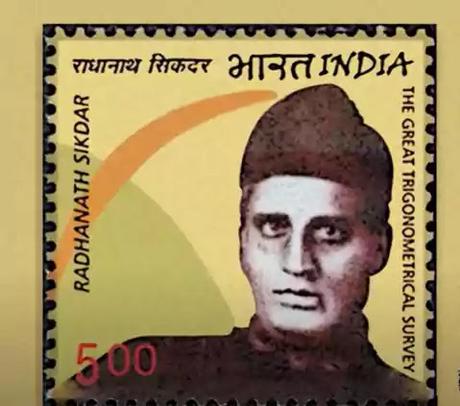Mount Everest & Radhanath Sikdar- Unknown Facts of India

Mount Everest. The highest mountain peak on Earth. One of the 79 peaks in the Himalayas. A Bengali computer measured its height whose name was Radhanath Sikdar. And that too without ever climbing Mount Everest! Who was he? How did he pull off this great feat?
Radhanath Sikdar was born in 1813 in Bengal. Due to financial constraints, he studied at a village school. On the basis of his brilliant mind, he earned a scholarship. In 1824, He enrolled in Hindu College in Calcutta which is now known as Presidency College.
Here, in 1830, he started taking lessons From the renowned mathematician John Tytler. John Tytler consideredRadhanath to be a genius and recommended him to George Everest. Computers and calculators had not been invented in the 19th century. In those times, a person who would do complex calculations using his brain was known as a computer.
On 19th December 1831, Radhanath was selected for GTS, the Great Trigonometrical Survey of India. Radhanath was only 19when he was paid 30 rupees a month to work in the post of a computer. After working for years on the GTS project, Radhanath was promoted as the chief computer considering his brilliant mind. He was also appointed as the superintendent of the Meteorological Department.
Also Read: Why didn't the Japanese use SHIELDS?
After George Everest retired, he was replaced by Colonel Andrew Scott Waugh who asked Radhanath to measure the heights of mountain peaks. It was a challenging task for Radhanath. To measure the heights of mountain peaks, genius Radhanath used simple geometric ideas and a gigantic Telescope-like instrument called a theodolite.

Today, a person can carry a Theodolite in his bag. But back in those days, a Theodolite weighed almost 1000 pounds that is 450 kilos! It would take the strength of at least12 men to lift it. Using this theodolite, Radhanath measured peak 15 by collecting data from six different locations. Back then, the entry was banned from certain areas surrounding Peak 15.
Every survey site was more than100 kilometers away from the mountain peak. The average height was measured from Mirzapur, Jarol, Janjipati, Ladania, Harpur, and Minai. Towers were erected at the survey site with the help of these towers, peak 15's triangulation started by measuring the height of the peak from the sea level.
Many scientists, historians, experts have analyzed Radhanath's extraordinarily and unique method in the following manner. For example... Consider two locations, A and B. The distance between the two points was already known, to find out the angle, Radhanath first went to location A.

He pointed the theodolite towards peak 15 and noted down the reading. He then rotated the theodolite towards location B and noted down that reading. In this manner, he recorded the reading of angle A. He then went to the location Band repeated the process.
This way he found out angle B. After noting down the distance between the two locations and the measurement of the two angles, he used triangulation and trigonometry to measure the height of peak 15. In this manner, he collected data from all locations.
For the next four years, he used the method of minimum squares, method of averages, trigonometric calculations, and also used many of his own methods; until one morning in 1852, Radhanath ran into Colonel Waugh's room and told him excitedly, "Sir, I've discovered the highest mountain in the world." Peak 15 measured by Radhanathwas 29,000 feet. This discovery left Kanchenjunga second, which was until then the highest peak.
Also Read: What Killed 9 Hikers in 1959? Two theories for an unsolved Soviet mystery
Mount Kanchenjunga was 28, 169 feet. After comparing it to all other peaks, Radhanath learned that Peak 15 is the highest peak in the world. Sikdar measured Peak 15 in 1852. But it took Waugh four years to confirm his findings. In the end, considering all the experts, Waugh added two feet to Radhanath's calculations and gave a stamp of approval to his findings. He declared the results in 1856 to the world.
Colonel Waugh considered George Everest as his mentor. and named Peak 15 after him though he had never seen it. So Peak 15 was named as Mount Everest. Peak 15 would've never been known as Mount Everest, had Radhanath not worked hard to discover it. The British never gave Radhanath the credit for this great accomplishment.
In one of the British survey manuals dated 1891, it was mentioned, that Radhanath Sikdar had written its technical and mathematical chapters. This manual helped other surveyors a lot. In 1864, Sikdar was awarded membership into the Philosophical Society of Germany for his unique contribution. He was the first Indian to get this honor.
Radhanath died in May 1870 and his name stopped being published in the subsequent editions of the survey manuals. Thus Radhanath was consigned to oblivion. Later, many writers, historians, and scientists tried to find the connection between mount Everest and Sikdar. They published many write-ups about him.

Ninety-six years after his discovery, in 1948, an obscure road in Chandar Nagar, Bengal was named after him. His statue was installed there. After 152 years, that is, in 2004, The government of India issued a postal stamp in the honor of Radhanath Sikdar.
Today science has progressed by leaps and bounds in the 21st Century and we have already landed on Mars. Had Radhanath been alive today, he would've taken India to a different height.

